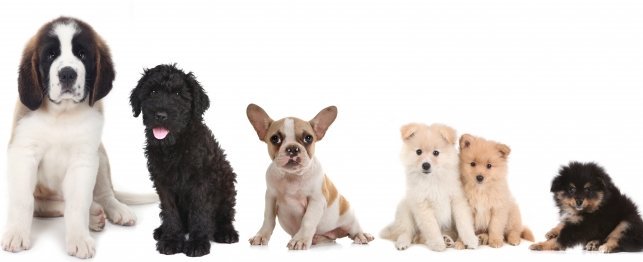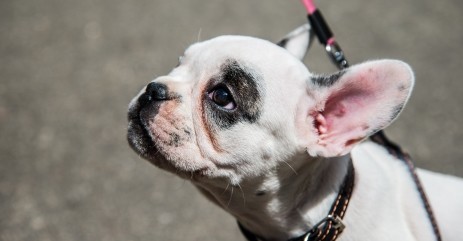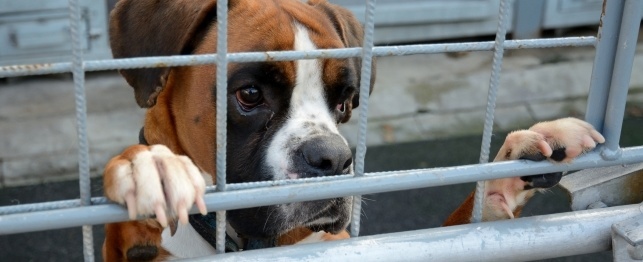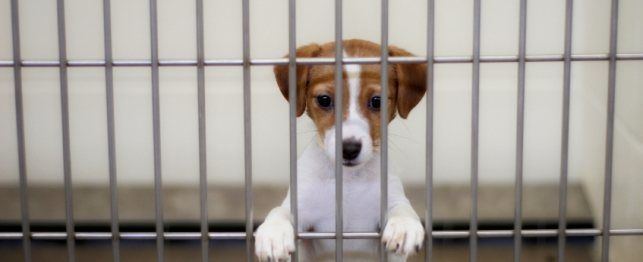Guide to Picking the Dog Breed That's Right For You

Dogs
Choosing the right dog – the breed, the size, the temperament, the cost – is the key first step to building a loving, healthy and happy relationship with a pet. Get it right and you're likely to have a deeply rewarding experience. Get it wrong and you're facing a potential nightmare.
So what should you do? First, recognize that there are two parties to this relationship – you (and the fellow humans in your household) and the dog. Both sides of the equation have to be compatible, which means that you have to understand as much about yourself as you do about the animal you're adopting.
Know Thyself
Your lifestyle, habits and personality will guide the type of dog that's right for you. So before taking a dog in, it's crucial that you take a personal inventory. Do you live in a small apartment in a city, in a suburban home with a backyard or in the wide-open spaces? Are you an active person or are you a couch potato? Are you looking for a dog for security, as a companion for children, as an exercise partner? Are you a type-A workaholic with little attention to spare, or do you have more leisure time? Are you away from home a great deal or is the house your base of operation? Are you prepared for the expense?
Know Your Dog
While all dogs are individuals (you could find a timid Rottweiler and an aggressive poodle), specific breeds share general characteristics and make similar demands on their human companions. The choices can be dizzying. The American Kennel Club, for example, recognizes over 150 breeds, and the world is blessed with a nearly infinite variety of mixed breeds. Here are some of the major issues to consider in narrowing you choice:
What the dog was bred for. Each breed has his own history and reason for being that has become part of his genetic code. The basset hound was bred to diligently track rabbits, deer and other game; the Great Pyrenees to protect livestock from foxes and other predators; the Labrador retriever as a hunter's helper; and the Old English sheepdog to drive sheep and cattle to market.
The AKC divides the breeds into seven groups that essentially reflect their backgrounds: sporting, non-sporting, hounds, working dogs, herding dogs, terriers, toys and a miscellaneous class. Most breeds will look for a job (guarding, herding, retrieving, etc.) that is along the lines for which they have been bred.
How much attention the breed requires. Some dogs are high-energy animals that need a lot of exercise and attention if they are to be properly cared for. These include Parson Russell terriers, border collies, shelties, Australian shepherds and Portuguese water dogs. If you cannot give them the exercise they need – for example, if you are a busy away-from-home type - you probably should not get such a dog.
(Actually, if you are really, really busy and away from home an awful lot you should think seriously about not getting any kind of dog! Dogs are very social animals that NEED people and or other dogs around).
Other dogs are calmer and need less exercise. These include the Maltese and the mastiff, which despite his large size and appearance is quite docile.
Size and environment. Very big dogs and very small apartments don't (shouldn't) go together, especially if you live on the 99th floor on your block. Think about taking the dog to the bathroom down myriad flights of stairs or in the elevator. Will this work for you? A space shortage problem will be compounded if you bring a very active largish dog, such as a golden retriever, into your apartment.
City apartment dwellers might want to consider a toy breed, such as a Pomeranian, Brussels griffon or Pekingese, if they are looking for a small dog, and could think about a standard poodle if a larger dog is desired. If you live in the suburbs, your household might well be able to accommodate dogs as large as the Great Dane, German shepherd or husky.
You should also be aware of health issues related to the environment. A Mexican hairless would not do well in the cold climate of the Rocky Mountains, but an Alaskan malamute would be perfectly comfortable. The West Highland white terrier might not be a good choice for areas with high spore and pollen counts, such as South Florida.
Grooming requirements. Some dogs require only the most basic grooming, while others need daily attention. With her proud bearing and long silky fur, an Afghan hound looks really swell, but she must be groomed thoroughly every day if she is to stay mat-free and beautiful. A German shorthaired pointer needs only to be groomed weekly.
Ease of training. When it comes to training, some breeds are star pupils while others need more diligence and reinforcement. A Boston terrier or Parson Russell terrier can be a challenge while the English springer spaniel and the Labrador generally learn easily.
Novice owners would be well advised to avoid breeds selected for enhanced aggression, such as pit bulls, Rottweilers, chows, shar-peis and akitas.
Child friendliness. This may be the single most important quality to focus on if you are considering introducing a dog into a household with small children. Many breeds, including boxers, golden retrievers, Newfoundlands, pugs and collies, love children and can be the souls of patience. Others breeds, such as the Rhodesian ridgeback, Kerry blue terrier and Dalmatian, are often not as tolerant of the young.
Expense. The expense of keeping a dog is proportional to his size. A very big dog may be just what you think you need but remember, he will eat like a horse and veterinary bills (for antibiotics, heartworm preventative treatment, etc.) will be sky high.
Common medical problems. Some breeds are prone to specific medical issues. German shepherds and St. Bernards have a tendency to suffer from hip dysplasia, a degenerative disease that causes lameness, while Dalmatians have a tendency toward deafness and urinary stones. Can these problems be avoided with certainty? Probably not. Will you have the resources to provide for such a dog? If not, skip that breed or carefully select within breed lines (but don't always believe the breeder).
Gender. Male dogs are generally more aggressive then female dogs thanks to gender roles inherited from their ancestors who lived in packs. Females are likely to be easier to train and housebreak.
The special issues of mutts. The same considerations come into play if you are choosing a mixed breed dog – only it's often difficult to tell what breed characteristics will come into play. There's no question, though, that a mutt makes a wonderful pet and may turn out to be an ideal companion.


 5 Important (And Commonly Overlooked) Decisions Before Buying Puppies
5 Important (And Commonly Overlooked) Decisio
5 Important (And Commonly Overlooked) Decisions Before Buying Puppies
5 Important (And Commonly Overlooked) Decisio
 Why Pets are Given Up
Why Pets are Given Up
Why Pets are Given Up
Why Pets are Given Up
 How to Select the Right Family Dog
How to Select the Right Family Dog
How to Select the Right Family Dog
How to Select the Right Family Dog
 Canine Rescue Groups
Canine Rescue Groups
Canine Rescue Groups
Canine Rescue Groups
 Top Dog Breeds for Seniors
Top Dog Breeds for Seniors
Top Dog Breeds for Seniors
Top Dog Breeds for Seniors